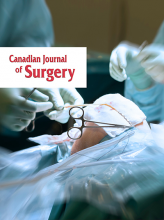We know there has been a difference in pay between males and females in medicine. Apparently, we have not made headway in rectifying this issue. A recent article1 has shown only that we still have a long way to go.
We have known about this issue in Canada,2 and south of the border the pay gap is a canyon; female doctors in the US have been estimated to earn $2 million less over a 40-year career than males after adjustment for factors that we have used to explain observed differences in income.3 These factors include hours worked, clinical revenue, practice type and specialty among others. Women do not work fewer hours in Canada — or at least not few enough to account for a large gap. The 2019 Canadian Medical Association Physician Workforce Survey4 showed that women worked only 4.7% fewer hours per week and 8.6% fewer hours on-call — small differences in relation to the disparity in income. The new Canadian numbers are rather telling. Adjusting for demographics and hours/weeks of work, female physicians earn about 9% less than their male counterparts.1 A national study2 reported that the adjusted pay gap is slightly larger among specialists than family physicians (10.2% v. 8.5%). There is even a provincial difference in the gap: Manitoba has the largest adjusted average gender net earnings gap at 19.8%, while Quebec has the smallest at 6.6%.2 The study’s approach was unique in that Canada Revenue Agency taxation files were linked to estimate the gap in earnings, not just gross billings, but also adding overhead practice expenses. Additionally, the researchers were able to adjust for work effort (hours and weeks of work) and other characteristics. In fact, female physicians in Canada earned less than comparable males at all points of their earnings distribution, with the gap widening more at the higher end.2 This may also reflect underrepresentation of female physicians in senior roles — an issue we already know about. The authors speculated that the variation across provinces in the adjusted gender pay gap may be due to differences in the amount and type of non-fee-for-service payment (i.e., capitation, salary) and in internal fee setting structures. These are manageable changes, or at least examinations to prove the point.1
In general, the pay gap cannot be explained by women working less (classically the excuse given), but relates more to systemic bias in medical school, hiring, promotion, clinical care arrangements, mechanisms used to pay physicians and societal structures broadly. We know that the percentage of female physicians is growing; the proportion of women among Canadian physicians has grown rapidly, from 11% in 1978 to 43% in 2018.2 Women made up less than 35% of physicians among 10 specialties with the highest gross and net incomes; in contrast, women accounted for 47%, 48% and 62% of physicians in the 3 specialties with the lowest estimated net income: family medicine, psychiatry, and pediatrics.2 Hopefully with the increasing number of female medical students there will be some shift in those numbers.
Biases built into the referral structure may also account for some part of the ongoing gap. Tough cases that need more discussion and may not be procedure driven are potentially being referred to female physicians in some systems. Large surgical or specialty technician driven cases are potentially sent to males. Further alignment with provincial billing codes would help verify this. This has happened despite specific gender and inequity policies and other approaches for pay and working conditions. We can talk ad nauseum about the strategies proposed by provincial and federal bodies to help diminish the gender gap, but based on these recent statistical analyses, female physicians in Canada require more headway. A more objective and granular site-by-site and system-by-system analysis is desperately needed to further understand the underlying factors and influences at work. This is not intended as a woke article; it is just an observation that we are not being fair. Given the deep diversity in health care systems and physician reimbursement plans across Canada (e.g., salaried v. fee for service, bonus structures, expected/contracted deliverables), the need for unbiased and objective data to ensure a fair compensation structure for people of all genders has never been clearer.
Footnotes
The views expressed in this editorial are those of the author and do not necessarily reflect the position of the Canadian Medical Association or its subsidiaries.
Competing interests: E.J. Harvey is the cofounder and head of medical innovation of NXTSens Inc.; the cofounder and chief medical officer of MY01 Inc., and Sensia Diagnostics Inc.; and the cofounder and director of Strathera Inc. He receives institutional support from J & J DePuy Synthes, Stryker, MY01, and Zimmer. No other competing interests were declared.
This is an Open Access article distributed in accordance with the terms of the Creative Commons Attribution (CC BY-NC-ND 4.0) licence, which permits use, distribution and reproduction in any medium, provided that the original publication is properly cited, the use is noncommercial (i.e., research or educational use), and no modifications or adaptations are made. See: https://creativecommons.org/licenses/by-nc-nd/4.0/






